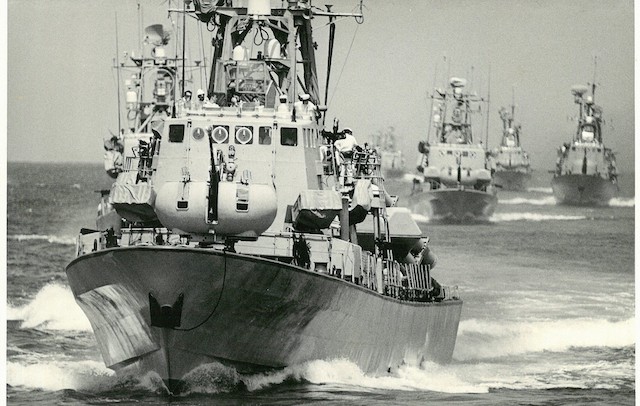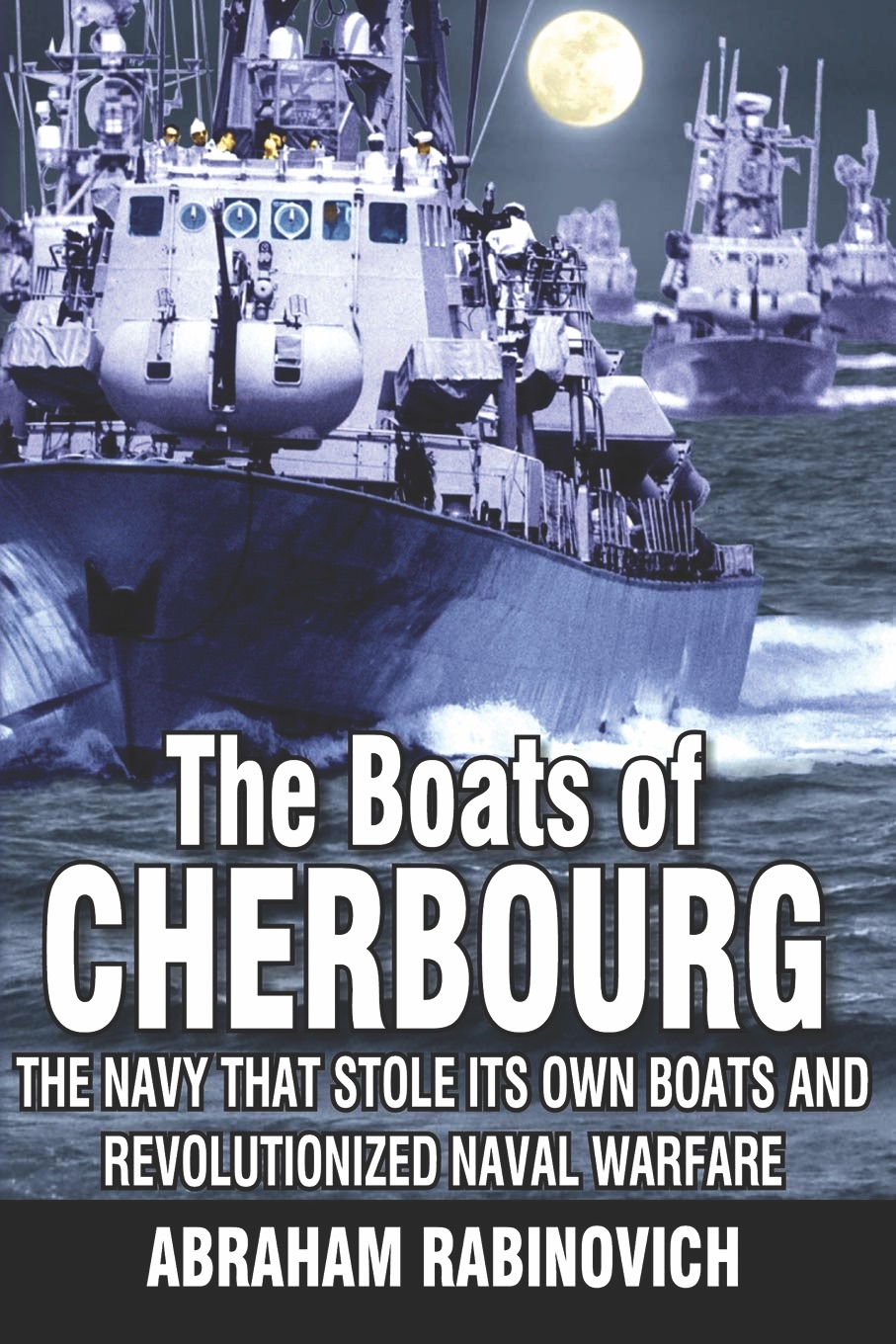A well respected Israeli military historian Abraham Rabinovich’s book is a fascinating account of a little known chapter of naval history. Israeli air force and armored corps were ruling the roost as these two services played key role in June 1967 stunning victory against three Arab armies. Israeli navy was relegated to the back seat as no one saw any meaningful role for this service. The lion’s share of defense budget was allocated to air force and army. Israeli navy needed a cheaper option to fulfill its operational role.
Syrian and Egyptian navies acquired Komar class Soviet boats armed with five hundred kilograms Styx sea-to-sea missiles with a range of twenty eight miles. Israel needed the tools to counter this threat. It ordered twelve boats from France to be fitted with Israeli made sea to sea missiles. Rabinovich provides the details based on interviews with navy personnel involved in this project. Everyone took notice of lethality of Styx when in 1971 Indo-Pakistan war, Indian navy used this missile to sink Pakistani vessels in Karachi harbor. Indian 25th Missile Squadron equipped with Soviet Osa class boats conducted this operation.
Book is divided into three broad sections. First section deals with challenges faced by Israeli navy in its formative years and internal debate about various options. Second section deals with development of indigenous sea to sea missile, role of boats ordered from France and Israeli chutzpah of running away with the boats from French harbor of Cherbourg when France slapped arms embargo on belligerents in the Middle East. Last section deals with Israeli naval actions in 1973 Yom Kippur War. A small section deals with assembly of superpower naval armada in Mediterranean Sea maneuvering to send signals to their clients and rivals. This can be next assignment for Rabinovich as he is well equipped to write about this naval chapter of the Cold War.

Rabinovich’ s work provides a glimpse of evolution of Israeli naval leadership and naval culture in 1960s. This helps in understanding better Israeli performance against numerically superior Arab armies. Israel’s defense minister Moshe Arens was a former professor of aeronautics and involved in early development of Israel’s missile program. Navy commander Rear Admiral Yohai Bin-Nun was a former naval commando who had participated in Israel’s war of independence. He had led one man assault boats that acted like manned torpedoes. Captain Zeev Almog took command of Israeli Red Sea Fleet at Sharm al-Shaikh ten months before 1973 war. He put the small sleepy naval garrison on fast track of training exercises and prepared it for new era of naval warfare of missiles.
The efforts of a highly professional team consisting of naval officers with operational experience and maverick technicians who shunned conventional solutions resulted in many innovations of modern naval warfare. One such innovation in missile technology was splitting of guidance system using both radar and altimeter resulting in a better sea-skimming missile. Another revolutionary idea was use of Electronic Warfare (EW) during actual combat. In fact, one naysayer Israeli naval officer called it ‘hocus-pocus’. Despite several failures and genuine concern about non-feasibility of the project, the core team tenaciously held on and with hard work overcame many obstacles.
Israeli military culture does not adhere to conventional military discipline. In navy, officers and sailors called each other by first name and there was no saluting. Junior is not hesitant to challenge his superior about a course of action and demand rationale. However, every man whether a boiler operator or cook saw his own role crucial for the success. This mindset created a team spirit that overcame many odds.
In the last three decades, Israeli Defence Forces (IDF) are essentially used as a police force for occupation duties in Palestinian territories due to unresolved political issues. Excesses against unarmed civilians and daily humiliation of Palestinian put IDF in a very negative light. No one remembers the old generation of IDF soldiers who handled the numerical superiority of their foes with raising the bar of dedication and training to achieve a high level of professionalism. Rabinovich’ s work takes us back to that era.
This book is a must read for every naval warfare school curriculum. Rabinovich with his access to Israeli firsthand sources has produced a very readable and fascinating account of evolution of Israeli navy and its impact on naval warfare.
Abraham Rabinovich. The Boats of Cherbourg: The Navy That Stole Its Own Boats and revolutionized Naval Warfare (Primary Publishing, Revised Edition 2019.





